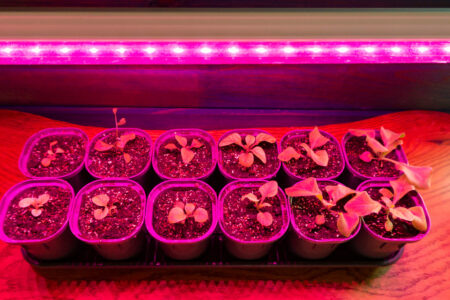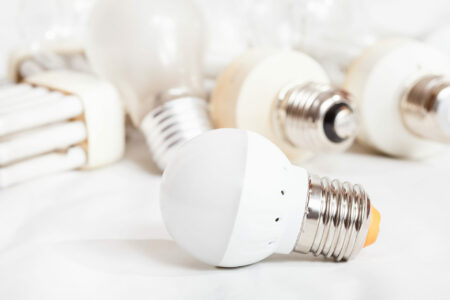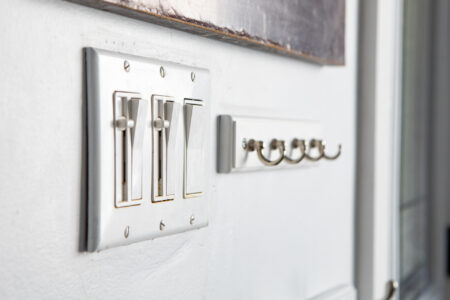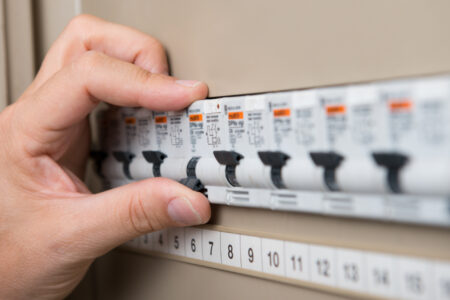LED strips are power-efficient, as they use less electricity than conventional incandescent and fluorescent lighting. What’s better is that they can even run on batteries! So, you’re probably wondering, how to power your LED strip lights with batteries? This article answers your question!
How to Choose a Suitable Battery to Power LED Strip Lights?
You probably want to start your new LED strip lighting project but there is no power outlet in this area. Luckily you can also power strip lights with batteries.
Before we jump into that, first you need to pick a suitable battery that can power them. Choosing a battery for your project mainly depends on three factors: voltage, capacity, and connectivity.
Voltage
Most modern strip lights are either 12V or 24V. Generally, you need to make sure that the battery’s outage isn’t higher than the strip’s voltage. A higher voltage from the batteries can, unfortunately, damage your lights.
On the other hand, a lower voltage can only cause reduced to no brightness. So, you need to pick the right voltage for your lighting.
For example, let’s assume you have a 12V strip that you want to power with 1.5V AA batteries. You’ll need 8 batteries to get 12V. That’s because 8 x 1.5 = 12V.
Similarly, if you have a 24V strip, you can use two 12V batteries in a series to produce 24V.
Capacity
The capacity of a battery can tell you how long it can provide current before it needs recharging or replacement. It’s abbreviated as “mAh,” which is milliampere-hour.
To calculate how long a battery can power your strip, first, you need to determine the total power consumption of the strip. Typically, you can find the power consumption per foot on the LED’s label or box.
Then, you need to multiply that number by the length of the strip you’re using. After that, you can divide the total power by the voltage.
Finally, multiply the result by 1000, and you’ll have the mA value for the strip. This can help you choose the right battery capacity.
Connectivity
You need to take connectivity into consideration when choosing a suitable battery. Most battery packs either have open wiring or DC connectors as output terminals.
On the other hand, light strips usually have copper pads, DC receptacles, or simply open wires.
How to Run LED Strip Lights on Batteries
Connecting your light strip to a battery isn’t complicated. The process can differ depending on the type of batteries you’ll be using. In most cases, you’ll need a battery case holder that your batteries can fit in.
More importantly, ensure that the output connectors of the batteries are compatible with the lighting. That applies to any type of battery you’ll be using.
Assuming you have an LED strip and a battery holder with open wires, the following steps will guide you through the process:
- Grab your battery holder and identify the open wires.
- Generally, the red wire is the positive one, and the black wire is the negative one.
- Grab your light strip and identify the open wires.
- Connect the strip’s positive wire to the battery holder’s positive wire.
- After that, connect the strip’s negative wire to the battery holder’s negative wire.
- Next, insert the batteries inside the holder.
- Finally, turn on the switch on the battery holder to power up your LED strip.
If this all works, you can finally install your light strips them in your desired location.
What Type of Batteries Can I Use to Power LED Strip Lights?
There are many types of batteries that can power LED strip lights. The most common ones include coin cells, alkaline, and lithium batteries.
Let’s check out each one in detail.
Coin Cell Batteries
Coin cell batteries are small and cylindrical.
Typically, they’re used in small devices, like watches and calculators. However, they can power up a short LED light strip with a suitable voltage for a few hours.
Luckily, you can find battery holders for coin cell batteries, too. So, installing them to power the strip won’t be a problem.
Unfortunately, the capacity and voltage of these batteries are low. As a result, they can’t power your LED strip for a long period. On the bright side, their compact size makes them suitable for many projects, like a gift box, a costume, or a desk.
Alkaline Batteries
AA and AAA alkaline batteries are a popular option when it comes to powering strip lights. They have a longer shelf life and a higher capacity than coin cells.
You can also find 9V alkaline batteries, which comprise six smaller 1.5 AAAA batteries in one small package. Yet, despite the big voltage, they don’t usually have a large capacity.
Lithium Batteries
Are you looking for a rechargeable battery with a larger capacity? Lithium batteries are for you!
Lithium batteries, as the name suggests, use lithium-ion particles to store and release energy. In other words, you can recharge the batteries and reuse them again.
Your smartphone probably has one of these batteries inside it, so you can imagine how long-lasting those may be when you pair them with your strip lights.
Is It Safe to Power LED Light Strips With Batteries?
Yes, powering light strips with batteries is safe if you choose the right voltage and install the batteries correctly. Additionally, you should steer clear of using any broken or damaged batteries.
When using lithium batteries, avoid bringing any type of conducting metal into contact with the batteries. You should also make sure that both terminals aren’t in contact with an item at the same time, as an electric current will pass through.
How to Extend the Life of LED Light Strips Batteries?
There are many ways to extend the batteries’ life. For starters, you can add a switch to your controller, or pick a battery holder with a switch. This way, you can cut off the power when you don’t need the lighting, which helps extend the batteries’ life and save energy.
Additionally, you may install a dimmer, which reduces the brightness of the lighting. As a result, your batteries will last longer. You can also opt for shorter LED strip lights because they consume less power.






